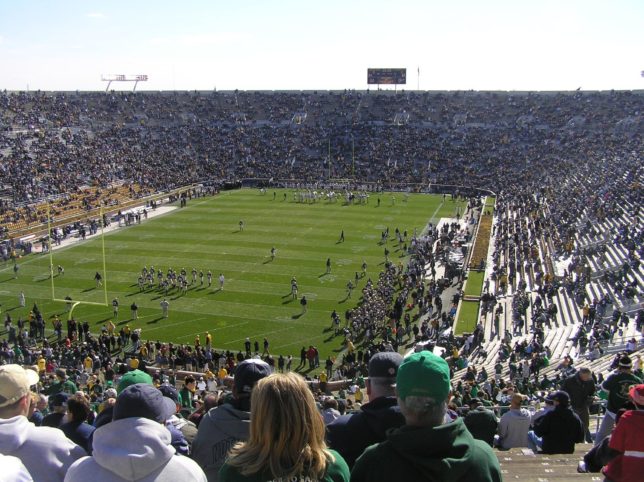Organization Trends
College Betting: Have Bookies Been More Honest Than Universities?
 OLYMPUS DIGITAL CAMERA
OLYMPUS DIGITAL CAMERA

College football returns Saturday night with the University of Miami (FL) playing the University of Florida, much to the delight of bookies and sports fans. College itself also begins soon for incoming freshmen. But a Wall Street Journal report earlier this month challenged the perceived value of higher ed: “College Still Pays Off, but Not for Everyone: Higher-education degree boosts wages for most people, but growing subset of graduates aren’t seeing return on their investment.”
American students and taxpayers put a lot into that “investment”—at least $559 billion per year (according to 2016 federal data), or about $1,700 annually for every person in the nation. For comparison, American gamblers “invest” less than $100 billion in football each year, and that includes both college and professional games. American universities exert a tremendous influence on our economy, culture, and politics. When an “investment” in them is failing a “growing subset” of investors, it’s time to ask at what point we start referring to a lot of their spending as a “wager.”
Where all that money goes should already be a cause for concern. According to the American Association of University Professors, the average, full-time faculty member enjoys a six-figure-salary. Don’t forget that these professors also enjoy tenure and are all but secure in their positions for life. University presidents make even more. But instead of urging universities to spend their money wisely advocates and policymakers say American higher education needs even greater “investment.”
On the “investor” side U.S. News & World Report estimates a Florida resident starting out as a new student at the University of Florida will pay an estimated $17,000 per year for in-state tuition, plus room and board. After four years that’ll be almost $70,000.
Is that a good bet?
Stack it up against a bet on the Florida Gators football team this weekend. As of Monday morning they are favored by seven points to beat the Miami Hurricanes. The average risk on a point spread bet on any team is ideally a little bit above 50 percent. So, if an incoming freshman at Florida bets four years of tuition, room and board ($70,000) on the Gators to cover the seven points this Saturday, he or she has a little less than 50 percent chance of swiftly doubling the money to $140,000.
Of course, gambling is exceedingly risky, and this big potential payoff must be balanced against the equally large risk of immediately losing $70,000.
So, if the success rate of pure gambling on college football is about 50 percent, how do those odds stack up against the risk on an “investment” in a college degree?
The Wall Street Journal report referenced above contains this sobering news for college gamblers: “New York Fed data show roughly four in 10 recent college graduates—those between ages 22 and 27—are in jobs that typically don’t require a degree.”
Six in ten in a job requiring a degree equates to a 60 percent chance of success for spending the time and money obtaining the degree. And while that’s still a bit better than the 50 percent success rate of betting all the money on a big football game, it’s not the only big risk students take.
A March report from National Public Radio added this punishing math: “On average, just 58 percent of students who started college in the fall of 2012 had earned any degree six years later, according to the National Student Clearinghouse Research Center.”
Multiplying those risks together equals a bad bet when compared to the 50/50 chances at the sports book. For every 100 incoming freshmen, just 42 have a degree after six years. And of those 42 graduates, just 60 percent (35 of them) end up working in a job that required the time and money to get the degree. That’s a “college bet” success rate of just 35 percent!
And that’s before accounting for the 4-6 years a student is effectively out of the full-time job market—a very large opportunity cost equating to lost wages and forgone work experience, non-participation in potentially lucrative skilled trade apprenticeships, and so forth.
These are averages across all schools and—more importantly—all students. One hundred hard-working mathematical geniuses attending top engineering schools to become petroleum engineers (average salary $120,000) are obviously trading on stronger odds that their bets will pay off. [Note: the University of Florida is ranked as the nation’s eighth-best public university by U.S. News & World Report and may be able to claim better than average results for the investment].
But those are the exceptions. In promoting their product as an “investment,” colleges collectively trade on these success stories while ignoring that well over half of incoming freshmen are bound to become academic and financial cannon fodder. And when it comes to fessing up about the big risk of that bet, a large percentage of schools are being less honest than a bookie.



